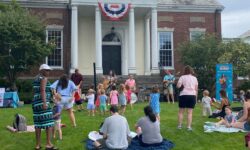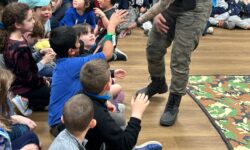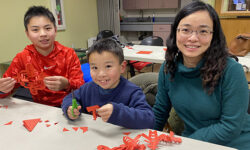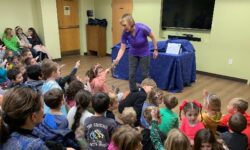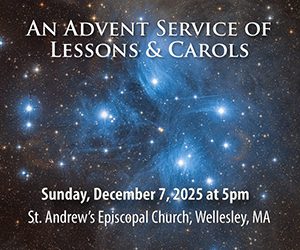[ccfic caption-text format="plaintext"]
By Ethan Lee
Hometown Weekly Intern
On August 6, the Let’s Build organization hosted the second part of the two-part workshop, “Fairytale Engineering,” at the Needham Library. This session, led by Let’s Build director Liz Lee, focused on the famous story of the three little pigs, with a slight twist. The participating children took the place of a new, fourth pig, who would use creativity and ingenuity to build a scaled-down house structure that could withstand the force of the Big Bad Wolf (represented by a fan).
Lee began the program by explaining the role of engineers in society, as well as the definition and significance of a model when constructing a building. Children quickly caught on with the building concepts introduced, with some of them using methods such as built-in ventilation. After the building was complete, they enthusiastically tested their final products.
Derek Stiles, a parent of one child involved in the activity, explained why he brought his son. “Part of it was to give him something constructive to do for a change of pace … to make him use his brain," he said. "We also like to just come to the library because it's a nice environment and it’s free.”
Anna Giraldo-Kerr discussed the reasons for her child participating: “We were intrigued by the mix of the fairy tale and building, [and] we came in with a sense of adventure…We want to encourage him to continue to develop that creativity and the building skills.”
The organization behind the event, Let’s Build, is an elementary and middle school building program that strives to teach kids about the importance of engineering and design. Let’s Build has also worked in the Dover Library with events related to this summer’s reading theme of “Build a Better World.” The coordinator of the “Fairytale Engineering” event in Needham, Liz Lee, has been organizing such events for five years, and is most interested in giving kids a better sense of engineering.
Lee’s favorite part of each program she’s organized?
“I do this a lot, but always see new things [regarding] kids’ abilities to solve problems in an innovative way.”






